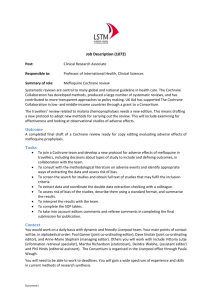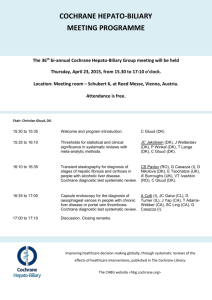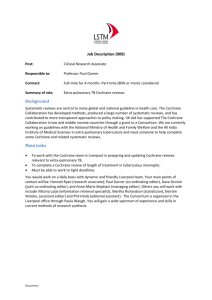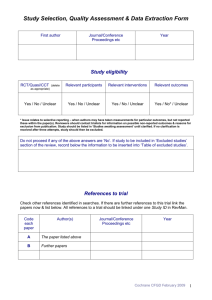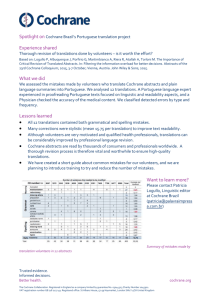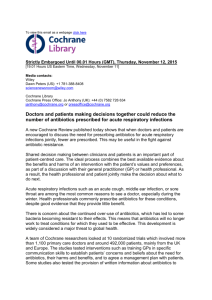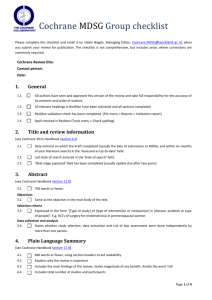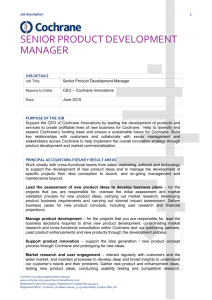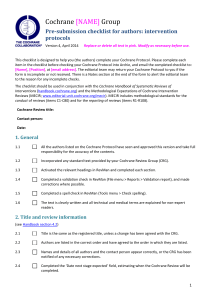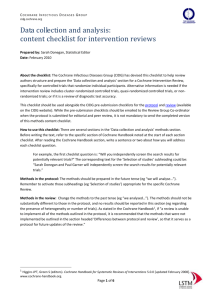Peer review checklist for protocol - Cochrane Pain, Palliative and
advertisement
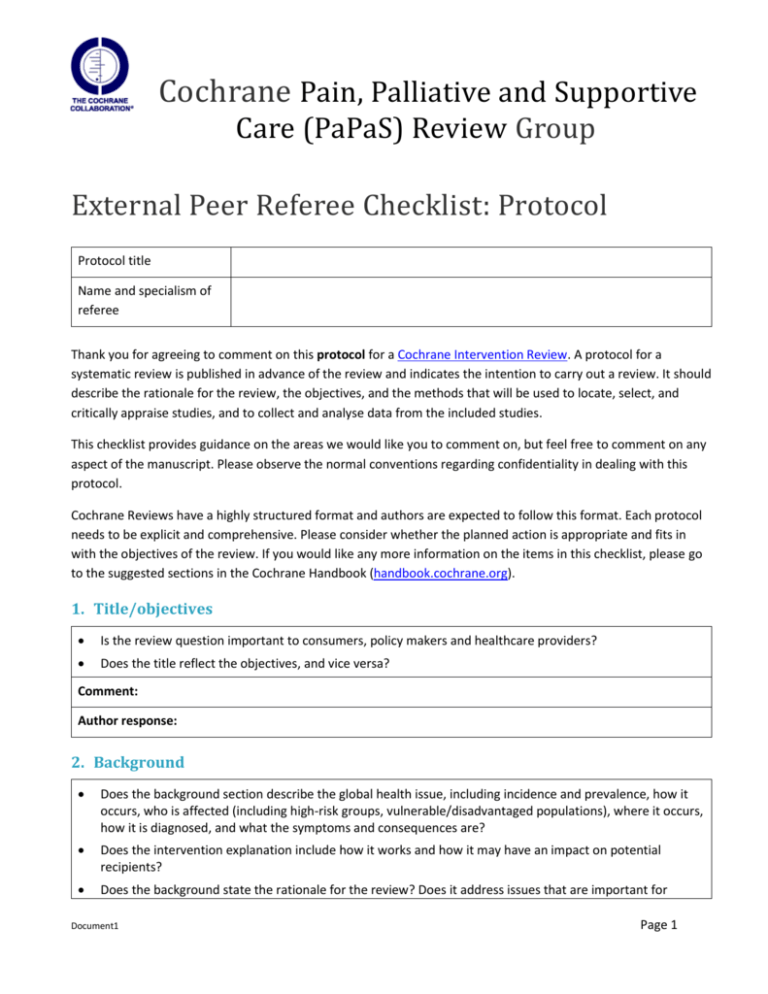
Cochrane Pain, Palliative and Supportive Care (PaPaS) Review Group External Peer Referee Checklist: Protocol Protocol title Name and specialism of referee Thank you for agreeing to comment on this protocol for a Cochrane Intervention Review. A protocol for a systematic review is published in advance of the review and indicates the intention to carry out a review. It should describe the rationale for the review, the objectives, and the methods that will be used to locate, select, and critically appraise studies, and to collect and analyse data from the included studies. This checklist provides guidance on the areas we would like you to comment on, but feel free to comment on any aspect of the manuscript. Please observe the normal conventions regarding confidentiality in dealing with this protocol. Cochrane Reviews have a highly structured format and authors are expected to follow this format. Each protocol needs to be explicit and comprehensive. Please consider whether the planned action is appropriate and fits in with the objectives of the review. If you would like any more information on the items in this checklist, please go to the suggested sections in the Cochrane Handbook (handbook.cochrane.org). 1. Title/objectives Is the review question important to consumers, policy makers and healthcare providers? Does the title reflect the objectives, and vice versa? Comment: Author response: 2. Background Does the background section describe the global health issue, including incidence and prevalence, how it occurs, who is affected (including high-risk groups, vulnerable/disadvantaged populations), where it occurs, how it is diagnosed, and what the symptoms and consequences are? Does the intervention explanation include how it works and how it may have an impact on potential recipients? Does the background state the rationale for the review? Does it address issues that are important for Document1 Page 1 consumers (including policy-makers)? Are the supporting references current and do they provide an international picture of the problem? Comment: Author response: 3. Criteria for considering studies for this review Participants, interventions, and comparators Are the types of studies to be included (randomised trials, quasi-randomised trials or other designs) described? Are the types of studies appropriate to the clinical question? Are the participants adequately described and are the reasons for any restrictions appropriate? Are the study interventions and comparators clearly described and is their selection appropriate? Comment: Author response: Types of outcome measures Is/are the primary outcome(s) meaningful to clinicians, patients (consumers), the general public, administrators, and policy-makers? Are all other important (beneficial and harmful) outcomes considered? Are appropriate methods of measuring each outcome and appropriate time points for measurement identified? If a Summary of Findings table is to be included in the Cochrane Review, have the most clinically relevant outcomes been selected for the Summary of Findings table? Comment: Author response: 4. Search methods for identification of studies (optional) (see Cochrane Handbook Chapter 6) Will there be a thorough unrestricted search for relevant studies using appropriate sources? Are there any additional resources that should be searched? Comment: Author response: Document1 Page 2 5. Data collection and analysis (see Cochrane Handbook Chapter 7) Are the criteria used to assess risk of bias clearly stated and appropriate? Are the planned statistical methods appropriate? Have sources of heterogeneity been identified and used to inform the proposed subgroup analyses? Are particular methodological issues likely to be encountered in the topic area (e.g. particular measures of effect size; studies with non-standard designs), for which methods have not been described? Are the sensitivity analyses appropriate? Any additional analyses that should be included? Are appropriate methods for summarising and interpreting their results, including consideration of the overall strength of the evidence, clinical importance of results, contextual factors, and considerations of equity described? Comments: Author response: 6. Additional comments Comments: Author response: 7. Potential conflicts of interest: Peer referee statement Do you have any potential conflict of interest? Yes (details below) No You should declare and describe any present or past affiliations or other involvement in any organisation or entity with an interest in the outcome of the review that might lead to a real or perceived conflict of interest. This includes acting as an investigator of a study that might be included in this review. You should declare potential conflicts even if you are confident that your judgement is not influenced. Conflict of interest statement: 8. Peer referee anonymity and acknowledgement I am happy to be acknowledged in the published protocol Yes No ---Thank you. Please return the full form via the Archie ‘ticket’ link in the original email--Cochrane Pain Palliative and Supportive Care Review Group Oxford Pain Relief Unit Churchill Hospital Oxford OX3 7LE UK Tel: +44 (0)1865 225762 Fax +44 (0)1865 252400 The PaPaS website: www.papas.cochrane.org The Cochrane Library: www.thecochranelibrary.com Document1 Page 3 Access to all Cochrane reviews: www.cochrane.org/reviews Follow us on Twitter @CochranePaPaS Document1 Page 4


